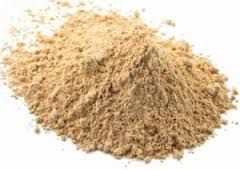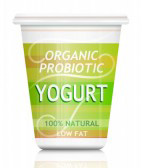Antioxidants
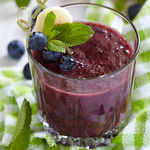 To fully understand antioxidants you must first understand oxidation. We shall explain this without the chemistry lesson about molecules and electrons. Put simply, oxidation is the rusting process. Imagine the bodywork of a car after an accident. You will notice that after a few days the shiny body of the car starts to go brown with rust where the paintwork has been damaged. The paintwork was there, not only to make the car look attractive so that someone would buy it but also to protect the bodywork from oxidation, that is, preventing oxygen from getting to it and causing it to rust. The rusting process gives rise to “free radicals” that attack the bodywork causing serious damage.
To fully understand antioxidants you must first understand oxidation. We shall explain this without the chemistry lesson about molecules and electrons. Put simply, oxidation is the rusting process. Imagine the bodywork of a car after an accident. You will notice that after a few days the shiny body of the car starts to go brown with rust where the paintwork has been damaged. The paintwork was there, not only to make the car look attractive so that someone would buy it but also to protect the bodywork from oxidation, that is, preventing oxygen from getting to it and causing it to rust. The rusting process gives rise to “free radicals” that attack the bodywork causing serious damage.
Imagine now the above process of oxidation taking place in every human body. The rusting process shows itself in different ways, grey hairs, wrinkles and crow’s feet and macular degeneration (the progressive loss of eyesight). Imagine also the free radicals attacking your cells and your immune system, even your DNA. Oxidation is considered to be one of the underlying causes of major degenerative sicknesses such as, cancer, heart disease and diabetes. You cannot stop the rusting process. You can only slow it down in the hope that you live healthier and longer.
Antioxidants are substances found in fruits, vegetables and meat and protect your cells from the effects of free radicals. In the human body free radicals are produced when your body breaks down food or by exposure to environmental hazards like smoke and radiation. The best known antioxidants are beta-carotene and vitamins A, C and E, however, there are other equally powerful or even more powerful antioxidants around, but less well known.
The potency of antioxidants can be found on the ORAC scale (Oxygen Radical Absorbance Capacity). Originally there was one such scale but now there are possibly hundreds as manufacturers manipulate tests to give their products a high rating. However there are certain everyday foods that are quite powerful antioxidants such as cloves, cinnamon, cocoa and green tea to name a few. It is important to bear in mind that certain organs and cells in your body may be more vulnerable to one particular free radical over another, so different antioxidants found in different fruits and vegetables may be more effective in combating one free radical than another. You cannot take AN antioxidant and feel that you are protecting yourself against free radical damage. Instead you have to take a complex of antioxidants. One suggestion is “eating by colours”. Eat purple, yellow, red, green, orange and blue fruits and vegetables to get a cross section of antioxidants.
Nowadays there is the issue of quality when it comes to food stuff. Some vegetables and even fruits are grown in soil so deplete in minerals that the fruits and vegetables themselves are just fruits and vegetables without the nutritional benefits. Consequently supplementation becomes necessary if you are to get your body to optimum health and even here all supplements are not equal.
Apple Cider Vinegar
Since about 5000 BC the Babylonians have been using vinegar as a preservative and condiment. It is questionable as to whether it was made from apples, as they are not native to the geographical area that was known as Babylon. Vinegar can be made from a variety of food products including dates, molasses, fruits, melons, coconut, honey, rice, grapes, potatoes, beet and grains but the most popular is apple cider vinegar.
 There are many health benefits associated with apple cider vinegar and they are not all anecdotal, meaning that some of the benefits have been scientifically proven. Here are some of the benefits associated with apple cider vinegar
There are many health benefits associated with apple cider vinegar and they are not all anecdotal, meaning that some of the benefits have been scientifically proven. Here are some of the benefits associated with apple cider vinegar
• Treats acid reflux which is usually caused by the production of too little acid as opposed to too much.
• Prevents indigestion. If you are eating in a restaurant or café for the first time or have doubts about the meal you are about to eat a teaspoon of cider apple vinegar mixed with water or honey taken before the meal (30 minutes if possible) should keep your stomach settled. This is due to its antibiotic properties.
• It soothes a sore throat.
• It decreases glucose levels. A study in 2007 showed that those with type 2 diabetes had a 4% to 6% lower level in the morning after they had drunk two tablespoons of cider vinegar the night before.
• It lowers cholesterol and blood pressure and could be part of a weight loss regime.
Vinegar is good for removing pesticides from fruit and vegetables when these are washed in a mixture of vinegar and water. Because of its acidic nature apple cider vinegar may lower potassium levels in the body, lower bone density, interact with some medications and cause dental issues if you do not brush your teeth soon after drinking it. You can always raise your potassium level by eating a banana or plantain.
Ginkgo Biloba
 Ginkgo biloba, also known as “maiden hair” is said to be one of the oldest living tree species. The leaves have been used by the Chinese for thousands of years for circulatory disorders and to regulate the flow of blood to the brain thus delivering more glucose to that organ. This increased blood flow improves memory and helps reduce the risk of strokes. Ginkgo also has a beneficial effect on glaucoma and retinal neuropathy. It has also been used as a blood thinner thus improving the flow of blood to the peripheries especially the tips of the fingers, which eases the effects of Raynaud’s disease, which is caused by the blood vessels in the fingers overreacting to cold. It also helps with intermittent claudication (painful legs from clogged arteries).
Ginkgo biloba, also known as “maiden hair” is said to be one of the oldest living tree species. The leaves have been used by the Chinese for thousands of years for circulatory disorders and to regulate the flow of blood to the brain thus delivering more glucose to that organ. This increased blood flow improves memory and helps reduce the risk of strokes. Ginkgo also has a beneficial effect on glaucoma and retinal neuropathy. It has also been used as a blood thinner thus improving the flow of blood to the peripheries especially the tips of the fingers, which eases the effects of Raynaud’s disease, which is caused by the blood vessels in the fingers overreacting to cold. It also helps with intermittent claudication (painful legs from clogged arteries).
Ginkgo biloba is an antioxidant with anti-inflammatory properties and has been associated with a slowing down in the progression of vitiligo, an autoimmune disease which causes discoloration of the skin. Research has shown that it also gives relief from headaches, asthma, allergies, sinusitis and tinnitus, a constant ringing in the ears and assists with reducing the symptoms of Parkinson’s disease. It brings relief from premenstrual syndrome (PMS) and reports suggest that it can slash the risk of ovarian cancer by up to 70%. Ginkgo biloba is said to be even more powerful when used in conjunction with panax gensing and is said to help with erectile dysfunction when used for a period of three months, the maximum time recommended. It also interacts with many medications so consult your health practitioner when you are considering making it a part of your wellness regime.
 It is recommended that you avoid products that include fresh or roasted ginkgo seeds as they may contain a toxic chemical. Pregnant and breast feeding women should not use ginkgo at all. Side effects are very rare but include dizziness, nausea, stomach upset and diarrhoea.
It is recommended that you avoid products that include fresh or roasted ginkgo seeds as they may contain a toxic chemical. Pregnant and breast feeding women should not use ginkgo at all. Side effects are very rare but include dizziness, nausea, stomach upset and diarrhoea.
Ginseng/Maca
Ginseng, known in Chinese as “renchen” (man root) because of its forked shape is a slow growing plant of the Panax family. It is one of the most widely used herbal supplements for restoring a feeling of well- being and has been attributed with many health benefits including the lowering of blood sugar (diabetes), boosting energy, relaxation, stress reduction, weight loss, lowering cholesterol and boosting libido.
 There are many herbs that go by the name of ginseng but they do not contain the same active ingredients as Panax gensing. One such herb is Siberian ginseng. Panax ginseng is generally regarded as a tonic and adaptogen, meaning that it helps the body adapt to changes. It can alter the effects of blood pressure and heart medications and should not be used if you are taking blood thinning medication, like warfarin. Pregnant women, lactating women ( those breastfeeding) and children should not use gensing . Ginseng should be used for a maximum of three months and then discontinued for about a month
There are many herbs that go by the name of ginseng but they do not contain the same active ingredients as Panax gensing. One such herb is Siberian ginseng. Panax ginseng is generally regarded as a tonic and adaptogen, meaning that it helps the body adapt to changes. It can alter the effects of blood pressure and heart medications and should not be used if you are taking blood thinning medication, like warfarin. Pregnant women, lactating women ( those breastfeeding) and children should not use gensing . Ginseng should be used for a maximum of three months and then discontinued for about a month
Some people have experienced side effects from the use of ginseng but most have been described as mild. They include headaches, restlessness, difficulty sleeping, elevated heart rates and nausea and others have reported swollen breasts and vaginal bleeding. There are symptoms associated with overdosing. With mild overdosing they are blurred vision, irritability, dizziness, dry mouth, edema (swollen feet and ankles) and diarrhoea. With severe overdosing the symptoms are decreased heart rate, vomiting, delirium, nausea and seizures.
Maca, also known as “Peruvian Ginseng” or “Nature’s Viagra” has been cultivated in the Andes mountains in Peru for over 3,000 years at a height between 12,000 and 15,000 feet, making it the only crop cultivated at such an altitude. It is like a radish, can be eaten raw or cooked and comes in three main colours, namely red, black and yellow. Pure red maca when used daily is linked to prostate reduction and pure black maca is considered to be the best for promoting energy. Maca is an endocrine adaptogen, meaning that it does not contain any hormones but contains nutrients that support normal hormone production.
There are many health benefits attributed to maca including the speeding up of recovery after an injury, curing insomnia and assisting with sleep, reducing the risk of diabetes, improving sex drive, increasing metabolism, easing joint pain even that associated with arthritis, increasing metabolism, helping with detoxification, curing chronic fatigue syndrome, lowering of cholesterol and high blood pressure and helping with macular degeneration (gradual loss of eyesight). It is also said to reverse hypothyroidism (underactive thyroid gland) and as a result contributes to weight loss and has also been used to increase fertility.
Maca is high in calcium, potassium, iron, magnesium, phosphorus, sulphur, sodium and zinc. And is also abundant in amino acids, essential fatty acids (it is said to contain 20 essential fatty acids) vitamins Bi, B2, C and E, fibre carbohydrates and protein. It is often recommended for those with adrenal fatigue as it is said to nourish the adrenal glands and reduce stress hormones. Maca has also been shown to be helpful with PMS, menopause and hot flushes and should not be taken by pregnant or breast feeding women or by children. The recommended dose is 15 grams taken over a day in three lots of 5 grams each. Overall maca should be taken for a maximum of four months with a break of a month before resuming.
Maca is said to stimulate the hypothalymus and pituary glands which are the “master” glands of the body, as they regulate the other glands. It follows, therefore, that when these two glands are functioning properly, the other glands, thyroid, pancreas, ovarian adrenal and testicular should also be functioning properly.
Probiotics
As you age your cellular immunity also declines and research has shown that around age 60 there is a significant drop in the number of bacteria in your gut. The importance of probiotics increase as you get older but maintaining a healthy gut is essential, even from birth.
Probiotics are defined as “live micro-organisms which, when taken in adequate amounts confer a health benefit on the host”. Probiotics are live bacteria. The word derives from the Greek language …pro (for) biota (life) and research suggests that probiotics could have benefits that extend beyond the gut, such as treating illnesses from fibromyalgia to type 1 diabetes.
Within your gastro-intestinal tract there is micro -biota or micro-flora, these are tiny live bacteria containing over 400 species. Small amounts are in your stomach and small intestines but the majority of them are found in your colon. The intestinal micro-biota help with digestion, synthesize vitamins and nutrients, support the development and functioning of the gut and strengthen the immune system. Probiotics are not new and have been with you from your first breath. During a normal delivery a child picks up bacteria from its mother. This does not happen when a caesarean section is carried out and it is for this reason that these children have allergies, lower levels of micro-biota and weak immune systems.
Our digestive system has what are called “good” and “bad” bacteria and optimal health depends on the maintenance of a balance between the good and the bad bacteria. Things like diet, diseases, emotional stress, lack of sleep, medication and your environment can upset that balance. The question is can your body restore that balance on its own or do you need to include a probiotic in your diet. A healthy digestive tract filters out harmful bacteria, toxins, chemicals and other waste products which can damage it. Our digestive tract also takes in things that our bodies need, such as nutrients from foods, absorbs them and helps deliver them to the cells in our bodies.
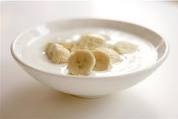 Probiotics also play a major part in the wellbeing of our immune system. When our immune system is functioning properly we are protected against germs, viruses, free radicals and bacteria, however, when it is compromised we can suffer from ailments such as Crohn’s disease, autoimmune disorders and other degenerative illnesses. Remember that 80% of your immune system lies in your gut and it is never too late to restore the balance between the good and bad bacteria.There are several different types of probiotics and their health benefits are determined by the job they do in your gut. Whilst some foods claim to provide probiotics it is questionable if they have them in sufficient quantities to deliver the health benefits you are looking for so supplements could be your answer.
Probiotics also play a major part in the wellbeing of our immune system. When our immune system is functioning properly we are protected against germs, viruses, free radicals and bacteria, however, when it is compromised we can suffer from ailments such as Crohn’s disease, autoimmune disorders and other degenerative illnesses. Remember that 80% of your immune system lies in your gut and it is never too late to restore the balance between the good and bad bacteria.There are several different types of probiotics and their health benefits are determined by the job they do in your gut. Whilst some foods claim to provide probiotics it is questionable if they have them in sufficient quantities to deliver the health benefits you are looking for so supplements could be your answer.
The Omegas
There are three types of Omega 3 acids namely, ALA, EPA and DHA. These are needed for normal body functions such as controlling blood clotting, building cell membrane in the brain, protection against stroke, heart disease, inflammatory bowel disease, cancer, autoimmune diseases such as lupus and rheumatoid arthritis. They also help with the lowering of LDL “bad” cholesterol, triglycerides, increase elasticity of blood vessels and they also prevent the build -up of harmful deposits in the arteries
 There are three types of Omega 3 acids namely, ALA, EPA and DHA. These are needed for normal body functions such as controlling blood clotting, building cell membrane in the brain, protection against stroke, heart disease, inflammatory bowel disease, cancer, autoimmune diseases such as lupus and rheumatoid arthritis. They also help with the lowering of LDL “bad” cholesterol, triglycerides, increase elasticity of blood vessels and they also prevent the build -up of harmful deposits in the arteries
There are three types of Omega 3 acids namely, ALA, EPA and DHA. These are needed for normal body functions such as controlling blood clotting, building cell membrane in the brain, protection against stroke, heart disease, inflammatory bowel disease, cancer, autoimmune diseases such as lupus and rheumatoid arthritis. They also help with the lowering of LDL “bad” cholesterol, triglycerides, increase elasticity of blood vessels and they also prevent the build -up of harmful deposits in the arteries
Diets high in EPA and DHA help with brain and eye development, prevent cardio-vascular disease and can help reduce the risk of Alzheimer’s disease and dementia. Diets high in DHA have been known to protect against degenerative processes within the retina of the eye. Good sources of EPA and DHA are sardines, herrings, trout, anchovies, wild salmon and mackerel. ALA is found in flaxseed, soya, canola oil and walnuts and green vegetables such as spinach, kale and brussel sprouts and is useful in the treatment of rheumatoid arthritis, multiple sclerosis, lupus, kidney disease, eczema, psoriasis and diabetes. It may also raise some men’s risk of getting prostate cancer.
Omega 6 plays an input role in growth and is important for brain and muscle development. It is also a transmitter of nerve impulses. Although it is essential, like omega 3, it is really the ratio of omega 6 to omega 3 that is critically important. The ratio should be 1:1 but because of the over consumption of animal fats and corn and vegetable oils the ratio can be as high as 25:1 in favour of omega 6. This imbalance causes massive chronic inflammation which is associated with all the major degenerative diseases
Most omega 6 comes from your diet and from foods such as meat, poultry, eggs, nuts and plant based oils and as stated before excessive amounts can contribute to inflammation which can result in heart disease, cancer, asthma, arthritis and depression. There are two types of Omega 6 Acids, namely Linoleic acid (LA) and Gamma-Linoleic acid which is also known as unsaturated Omega 6 fatty acids. This differs slightly from LA and is found in different foods. Linoleic Acid (LA) is found in corn oil, safflower oil, soya oil, sunflower oil, peanut oil and canola oil. Linoleic acid (LA) helps reduce the risk of heart attacks and strokes by lowering cholesterol and triglycerides, increasing the elasticity of blood vessels and preventing the build-up of harmful fats in the arteries. GLA is found in evening primrose oil and borage oil and is useful in the treatment of conditions that affect the skin (eczema, psoriasis). It is also useful in the treatment of chronic fatigue syndrome, allergic rhinitis (hayfever) and metabolic syndrome.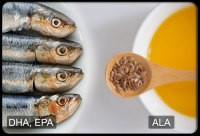
Of the three omegas, this is the only one that your body can produce but it is more beneficial when it is obtained from food. It is found in some nuts like almonds, pistachios, pecans and cashews, fruits, avocados and olive oil. It offers protection against cardiovascular disease, raises HDL “good” cholesterol, reduces LDL “bad” cholesterol and also protects against metabolic syndrome. Metabolic syndrome is the name given to a group of risk factors that raises your chances of getting heart disease, diabetes or stroke. There are five factors and you can perm any three from five. They are a large waistline, high triglycerides, low HDL cholesterol, high LDL cholesterol and high blood pressure. Although omega 9 is important it is not considered essential because it is not needed for normal human growth and development like omega 3 and omega 6.
When used in the proper ratios the omegas confer substantial health benefits but when there is an imbalance bad health is the result. Get it right and you will come to see them not just as the three omegas but the three amigos. You may also want to consider taking a supplement but be aware that some supplements may be contaminated and may not even deliver enough of the essential fatty acids. Make sure you buy a quality brand.
Diets high in EPA and DHA help with brain and eye development, prevent cardio-vascular disease and can help reduce the risk of Alzheimer’s disease and dementia. Diets high in DHA have been known to protect against degenerative processes within the retina of the eye. Good sources of EPA and DHA are sardines, herrings, trout, anchovies, wild salmon and mackerel. ALA is found in flaxseed, soya, canola oil and walnuts and green vegetables such as spinach, kale and brussel sprouts and is useful in the treatment of rheumatoid arthritis, multiple sclerosis, lupus, kidney disease, eczema, psoriasis and diabetes. It may also raise some men’s risk of getting prostate cancer.
Omega 6 plays an input role in growth and is important for brain and muscle development. It is also a transmitter of nerve impulses. Although it is essential, like omega 3, it is really the ratio of omega 6 to omega 3 that is critically important. The ratio should be 1:1 but because of the over consumption of animal fats and corn and vegetable oils the ratio can be as high as 25:1 in favour of omega 6. This imbalance causes massive chronic inflammation which is associated with all the major degenerative diseases
Most omega 6 comes from your diet and from foods such as meat, poultry, eggs, nuts and plant based oils and as stated before excessive amounts can contribute to inflammation which can result in heart disease, cancer, asthma, arthritis and depression. There are two types of Omega 6 Acids, namely Linoleic acid (LA) and Gamma-Linoleic acid which is also known as unsaturated Omega 6 fatty acids. This differs slightly from LA and is found in different foods. Linoleic Acid (LA) is found in corn oil, safflower oil, soya oil, sunflower oil, peanut oil and canola oil. Linoleic acid (LA) helps reduce the risk of heart attacks and strokes by lowering cholesterol and triglycerides, increasing the elasticity of blood vessels and preventing the build-up of harmful fats in the arteries. GLA is found in evening primrose oil and borage oil and is useful in the treatment of conditions that affect the skin (eczema, psoriasis). It is also useful in the treatment of chronic fatigue syndrome, allergic rhinitis (hayfever) and metabolic syndrome.
 Of the three omegas, this is the only one that your body can produce but it is more beneficial when it is obtained from food. It is found in some nuts like almonds, pistachios, pecans and cashews, fruits, avocados and olive oil. It offers protection against cardiovascular disease, raises HDL “good” cholesterol, reduces LDL “bad” cholesterol and also protects against metabolic syndrome. Metabolic syndrome is the name given to a group of risk factors that raises your chances of getting heart disease, diabetes or stroke. There are five factors and you can perm any three from five. They are a large waistline, high triglycerides, low HDL cholesterol, high LDL cholesterol and high blood pressure. Although omega 9 is important it is not considered essential because it is not needed for normal human growth and development like omega 3 and omega 6.
Of the three omegas, this is the only one that your body can produce but it is more beneficial when it is obtained from food. It is found in some nuts like almonds, pistachios, pecans and cashews, fruits, avocados and olive oil. It offers protection against cardiovascular disease, raises HDL “good” cholesterol, reduces LDL “bad” cholesterol and also protects against metabolic syndrome. Metabolic syndrome is the name given to a group of risk factors that raises your chances of getting heart disease, diabetes or stroke. There are five factors and you can perm any three from five. They are a large waistline, high triglycerides, low HDL cholesterol, high LDL cholesterol and high blood pressure. Although omega 9 is important it is not considered essential because it is not needed for normal human growth and development like omega 3 and omega 6.
When used in the proper ratios the omegas confer substantial health benefits but when there is an imbalance bad health is the result. Get it right and you will come to see them not just as the three omegas but the three amigos. You may also want to consider taking a supplement but be aware that some supplements may be contaminated and may not even deliver enough of the essential fatty acids. Make sure you buy a quality brand.

